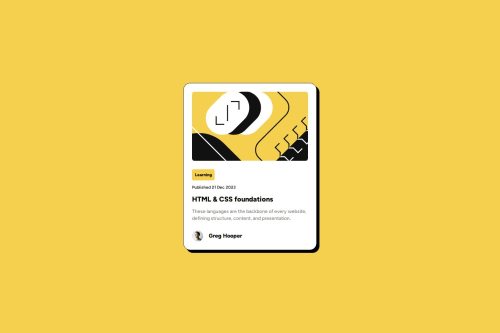Blog Preview Card using Tailwind CSS

Solution retrospective
I am most proud of trying out Tailwind CSS for the first time, and I find it incredibly handy. I am glad that I decided to give it a try. If I were to do something differently next time, I would probably explore more advanced features within Tailwind CSS to further enhance my projects.
What challenges did you encounter, and how did you overcome them?When I first started using Tailwind CSS, I faced some challenges. Figuring out how it works, organizing my folders, extending styles with custom colors, and adding custom fonts were all new to me. To overcome these, I searched for better tutorials and resources. I followed the official Tailwind CSS documentation and also watched the crash course on JS Mastery YouTube channel. This experience not only helped me understand Tailwind CSS better but also improved how I organize my projects and style them.
What specific areas of your project would you like help with?I need help organizing my code for better readability and following best practices. I'm looking for guidance on how to structure my project effectively with Tailwind CSS or recommendations for the best resources to follow.
Please log in to post a comment
Log in with GitHubCommunity feedback
No feedback yet. Be the first to give feedback on Rora Alem's solution.
Join our Discord community
Join thousands of Frontend Mentor community members taking the challenges, sharing resources, helping each other, and chatting about all things front-end!
Join our Discord